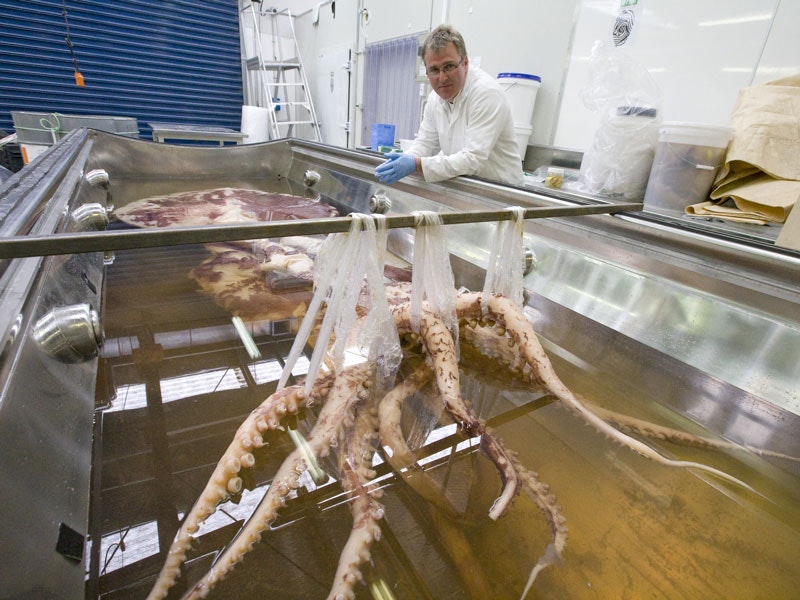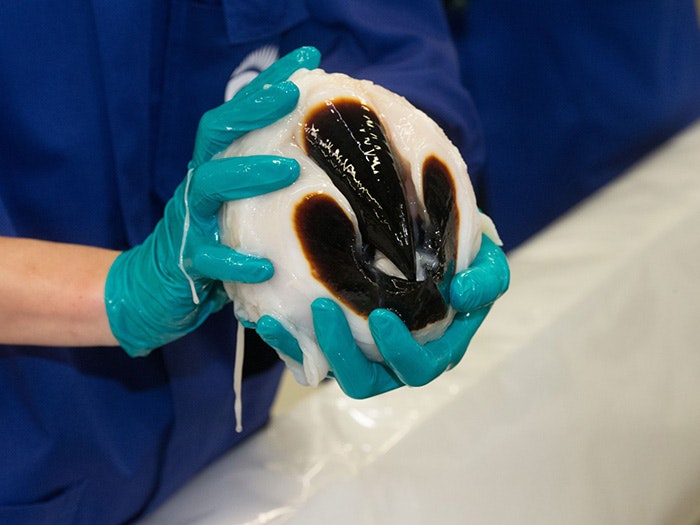
Colossal squid at Te Papa
We have one colossal squid on display, but did you know we have three colossal squid specimens in our collection?
Free museum entry for New Zealanders and people living in New Zealand
Open every day 10am-6pm
(except Christmas Day)
Free museum entry for New Zealanders and people living in New Zealand
Giant squid, colossal squid, and octopus are all molluscs.
A typical squid has:
a streamlined body
a clear internal shell known as a gladius or pen
a head
a mantle (which fits like a hat over the main part of the body)
eight arms
two tentacles with hooks, or sucker rings, or both
two fins
A typical octopus has:
a round, bulbous body
no internal shell
a head
a mantle
eight arms with suckers (never hooks)
no tentacles and no fins
Drawing of a colossal squid, giant squid, and giant Pacific octopus (left to right), 2019. Illustration by Rachael Hockridge. Te Papa
Colossal squid Mesonychoteuthis hamiltoni are slightly shorter than giant squid Architeuthis dux, but have a larger, heavier body.
Te Papa’s colossal squid tips the scales at a massive 490 kg. In contrast, giant squid weigh up to about 275 kg.
Giant squid, Architeuthis dux Steenstrup, collected 24 August 2007 off Cape Foulwind, New Zealand. CC BY-NC-ND 4.0. Te Papa (M.277965)
Scientists with a colossal squid, 2008. Te Papa
All squid have sharp horny beaks made of material similar to human fingernails. The colossal squid has the largest beak of any squid, including the giant squid.
Colossal squid beak, 2014. Photograph by Norm Heke. Te Papa
The tips of the colossal squid’s tentacles (the clubs) are armed with two unusual rows of sharp, swivelling hooks, and two rows of tiny suckers.
Other squid species also have tentacle hooks. The beak and the hooks are lethal weapons for catching and holding large fish like the toothfish.
Tentacle club swivelling hook and arm sucker dissected out from the fleshy suckers, 2008. Te Papa

We have one colossal squid on display, but did you know we have three colossal squid specimens in our collection?

Discover all about the anatomy this deep sea beast. Learn about it's massive eyes, sharp beak, and long hooked tentacles.